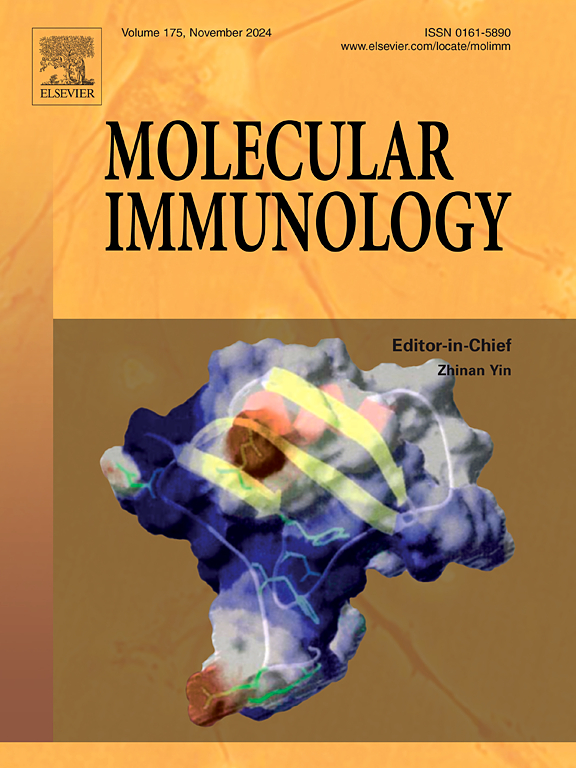Using novel approaches to conjugate peptides of Macrotermes bellicosus and Curcuma longa for targeted intervention of irritable bowl diseases caused by tumor necrosis factor superfamily member 15 (TNFSF15)
IF 3
3区 医学
Q2 BIOCHEMISTRY & MOLECULAR BIOLOGY
引用次数: 0
Abstract
This study presents an in-silico approach to develop targeted therapies for Irritable Bowel Disease (IBD) by focusing on TNFSF15. Peptides derived from Macrotermes bellicosus and Curcuma longa were selected, conjugated with the 50S ribosomal protein L7/L12 adjuvant, and analyzed for immunogenic potential. Gene expression analysis showed differential TNFSF15 expression in gastrointestinal tissues. Functional enrichment revealed its role in immune regulation and cytokine signaling. Of the 20 peptides identified, 8 showed high antigenicity and 4 were allergenic. Structural modeling and docking predicted stable interactions with TNFSF15 (binding energy: –9.4 kJ/mol), supported by molecular dynamics. Immune simulations indicated robust IgM and IgG responses. These findings suggest that plant and insect derived peptides may offer promising therapeutic candidates for TNFSF15-associated IBD.
新方法结合大白蚁和姜黄肽靶向干预肿瘤坏死因子超家族成员15 (TNFSF15)致易激性肠病
本研究提出了一种专注于TNFSF15的计算机方法来开发针对肠易激病(IBD)的靶向治疗。选取大白蚁(Macrotermes bellicosus)和姜黄(Curcuma longa)的肽段,结合50S核糖体蛋白L7/L12佐剂,分析其免疫原性。基因表达分析显示TNFSF15在胃肠道组织中有差异表达。功能富集揭示了其在免疫调节和细胞因子信号传导中的作用。在鉴定的20个多肽中,8个具有高抗原性,4个具有致敏性。在分子动力学的支持下,结构建模和对接预测了与TNFSF15的稳定相互作用(结合能:-9.4 kJ/mol)。免疫模拟显示IgM和IgG反应强劲。这些发现表明植物和昆虫来源的肽可能为tnfsf15相关的IBD提供有希望的治疗候选者。
本文章由计算机程序翻译,如有差异,请以英文原文为准。
求助全文
约1分钟内获得全文
求助全文
来源期刊

Molecular immunology
医学-免疫学
CiteScore
6.90
自引率
2.80%
发文量
324
审稿时长
50 days
期刊介绍:
Molecular Immunology publishes original articles, reviews and commentaries on all areas of immunology, with a particular focus on description of cellular, biochemical or genetic mechanisms underlying immunological phenomena. Studies on all model organisms, from invertebrates to humans, are suitable. Examples include, but are not restricted to:
Infection, autoimmunity, transplantation, immunodeficiencies, inflammation and tumor immunology
Mechanisms of induction, regulation and termination of innate and adaptive immunity
Intercellular communication, cooperation and regulation
Intracellular mechanisms of immunity (endocytosis, protein trafficking, pathogen recognition, antigen presentation, etc)
Mechanisms of action of the cells and molecules of the immune system
Structural analysis
Development of the immune system
Comparative immunology and evolution of the immune system
"Omics" studies and bioinformatics
Vaccines, biotechnology and therapeutic manipulation of the immune system (therapeutic antibodies, cytokines, cellular therapies, etc)
Technical developments.
 求助内容:
求助内容: 应助结果提醒方式:
应助结果提醒方式:


